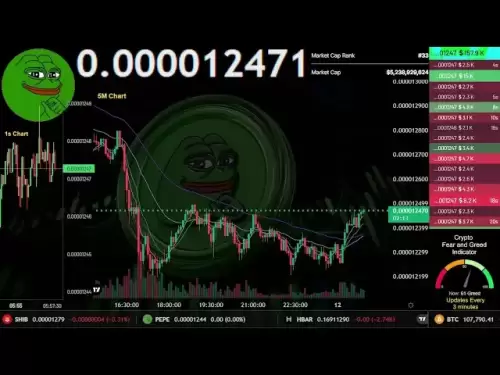-
 Bitcoin
Bitcoin $107,524.1338
-2.08% -
 Ethereum
Ethereum $2,759.6258
-2.96% -
 Tether USDt
Tether USDt $1.0001
-0.01% -
 XRP
XRP $2.2447
-3.30% -
 BNB
BNB $663.2359
-1.22% -
 Solana
Solana $159.4006
-4.12% -
 USDC
USDC $0.9997
-0.02% -
 Dogecoin
Dogecoin $0.1888
-6.27% -
 TRON
TRON $0.2747
-5.52% -
 Cardano
Cardano $0.6856
-5.22% -
 Hyperliquid
Hyperliquid $43.0102
-1.82% -
 Sui
Sui $3.3408
-4.31% -
 Chainlink
Chainlink $14.3998
-6.93% -
 Avalanche
Avalanche $21.1514
-5.67% -
 Bitcoin Cash
Bitcoin Cash $434.1950
-2.16% -
 Stellar
Stellar $0.2746
-2.49% -
 UNUS SED LEO
UNUS SED LEO $8.8676
-1.35% -
 Toncoin
Toncoin $3.1887
-2.77% -
 Shiba Inu
Shiba Inu $0.0...01269
-6.05% -
 Hedera
Hedera $0.1693
-5.35% -
 Litecoin
Litecoin $88.9750
-3.86% -
 Polkadot
Polkadot $4.0760
-5.21% -
 Monero
Monero $324.9846
-3.88% -
 Ethena USDe
Ethena USDe $1.0001
-0.06% -
 Bitget Token
Bitget Token $4.7101
-3.32% -
 Dai
Dai $0.9998
-0.01% -
 Pepe
Pepe $0.0...01238
-6.14% -
 Uniswap
Uniswap $7.8837
-5.21% -
 Pi
Pi $0.6275
-1.93% -
 Aave
Aave $300.0614
-4.94%
How to view the resonance bottom divergence of multiple indicators? How to operate the synchronous golden cross of MACD+RSI+KDJ?
Resonance bottom divergence signals a potential uptrend reversal when MACD, RSI, and KDJ show bullish divergence at a price low.
Jun 10, 2025 at 11:42 am
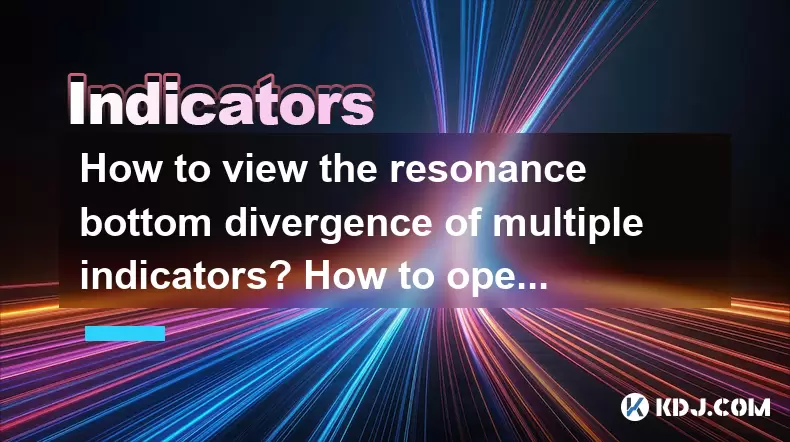
Understanding Resonance Bottom Divergence
Resonance bottom divergence in the context of cryptocurrency trading refers to a situation where multiple technical indicators simultaneously show a bullish divergence at the bottom of a price trend. This phenomenon suggests a potential reversal from a downtrend to an uptrend. To effectively identify this, traders typically look at indicators such as the Moving Average Convergence Divergence (MACD), Relative Strength Index (RSI), and Stochastic Oscillator (KDJ).
Identifying Resonance Bottom Divergence
To spot resonance bottom divergence, follow these steps:
- Analyze the Price Chart: Start by examining the price chart of the cryptocurrency you are interested in. Look for a clear downtrend where the price is making lower lows.
- Check MACD: On the MACD indicator, look for a situation where the price makes a lower low, but the MACD histogram or line makes a higher low. This indicates a bullish divergence.
- Check RSI: On the RSI, a bullish divergence occurs when the price makes a lower low, but the RSI makes a higher low. Typically, the RSI should be below 30 to indicate an oversold condition.
- Check KDJ: Similarly, on the KDJ, look for a bullish divergence where the price makes a lower low, but the KDJ makes a higher low. The KDJ should also be in the oversold territory, typically below 20.
When all three indicators show a bullish divergence at the same time, it signals a strong possibility of a trend reversal, known as resonance bottom divergence.
Understanding the Synchronous Golden Cross
The synchronous golden cross of MACD, RSI, and KDJ refers to a situation where all three indicators simultaneously generate a bullish signal. This can be a powerful confirmation for traders to enter a long position.
Identifying the Synchronous Golden Cross
To identify the synchronous golden cross, follow these steps:
- MACD Golden Cross: On the MACD, a golden cross occurs when the MACD line crosses above the signal line. This should happen from a position below the zero line.
- RSI Golden Cross: On the RSI, a golden cross can be identified when the RSI line crosses above its own moving average. This typically happens when the RSI moves from below 50 to above 50.
- KDJ Golden Cross: On the KDJ, a golden cross occurs when the %K line crosses above the %D line. This should happen from a position below 50.
When all three indicators show a golden cross at the same time, it indicates a strong bullish momentum.
Operating the Synchronous Golden Cross
To operate based on the synchronous golden cross of MACD, RSI, and KDJ, follow these steps:
- Confirm the Signal: Ensure that all three indicators show a golden cross at the same time. This can be done by visually inspecting the chart or using custom alerts in your trading platform.
- Enter the Trade: Once the synchronous golden cross is confirmed, enter a long position. This can be done by buying the cryptocurrency at the current market price or setting a buy order at a slightly higher price to ensure the trend continues.
- Set Stop-Loss and Take-Profit: To manage risk, set a stop-loss order below the recent swing low. For take-profit, consider setting multiple targets at different resistance levels or using a trailing stop to maximize gains.
- Monitor the Trade: Keep an eye on the trade and be ready to adjust your stop-loss and take-profit levels based on market movements. If the indicators show signs of a reversal, consider exiting the trade.
Practical Example of Resonance Bottom Divergence and Synchronous Golden Cross
Let's consider a practical example using Bitcoin (BTC) to illustrate how to identify and operate based on resonance bottom divergence and the synchronous golden cross.
- Resonance Bottom Divergence Example: Suppose Bitcoin's price is in a downtrend, making lower lows. On the chart, you notice that the MACD, RSI, and KDJ all show higher lows while the price is making lower lows. This indicates a resonance bottom divergence, suggesting a potential reversal.
- Synchronous Golden Cross Example: After identifying the resonance bottom divergence, you continue to monitor the indicators. At a certain point, the MACD line crosses above the signal line, the RSI line crosses above its moving average, and the %K line of the KDJ crosses above the %D line, all at the same time. This confirms a synchronous golden cross.
Based on this, you decide to enter a long position on Bitcoin, setting a stop-loss below the recent swing low and multiple take-profit levels at resistance points.
Frequently Asked Questions
Q: Can resonance bottom divergence occur without a synchronous golden cross?
A: Yes, resonance bottom divergence can occur without a synchronous golden cross. The divergence indicates a potential reversal, but the golden cross is a separate signal that confirms bullish momentum. Traders often look for both signals to increase the probability of a successful trade.
Q: How can I automate the detection of resonance bottom divergence and synchronous golden cross?
A: Many trading platforms and software allow for the creation of custom indicators and alerts. You can program these tools to monitor multiple indicators and alert you when both resonance bottom divergence and a synchronous golden cross occur. This requires some knowledge of programming or the use of pre-built scripts available in trading communities.
Q: Are there other indicators that can be used in conjunction with MACD, RSI, and KDJ for more confirmation?
A: Yes, traders often use additional indicators such as the Bollinger Bands, Moving Averages, and the Awesome Oscillator to confirm signals from MACD, RSI, and KDJ. Combining multiple indicators can provide a more robust trading strategy.
Q: How do market conditions affect the reliability of resonance bottom divergence and synchronous golden cross?
A: Market conditions such as volatility, liquidity, and overall sentiment can affect the reliability of these signals. In highly volatile markets, false signals may be more common, requiring traders to use additional confirmation methods or adjust their risk management strategies accordingly.
Disclaimer:info@kdj.com
The information provided is not trading advice. kdj.com does not assume any responsibility for any investments made based on the information provided in this article. Cryptocurrencies are highly volatile and it is highly recommended that you invest with caution after thorough research!
If you believe that the content used on this website infringes your copyright, please contact us immediately (info@kdj.com) and we will delete it promptly.
- USDC Expands Its Stablecoin Offering to XRP Ledger (XRPL), Targeting New Use Cases
- 2025-06-13 00:01:18
- How to Track Your Wallet Activity On Etherscan
- 2025-06-13 00:01:18
- Bitcoin Solaris (BTC-S): The Next 10,000x?
- 2025-06-13 00:01:17
- BlockDAG (BDAG) Emerges as a Contender by Hooking NBA Buzz
- 2025-06-13 00:01:17
- Hacker Who Stole $23 Million from Crypto Exchange Bittrue Starts Laundering Proceeds Through Tornado Cash
- 2025-06-12 23:50:12
- Bitcoin Briefly Surpassed $110,000
- 2025-06-12 23:50:12
Related knowledge
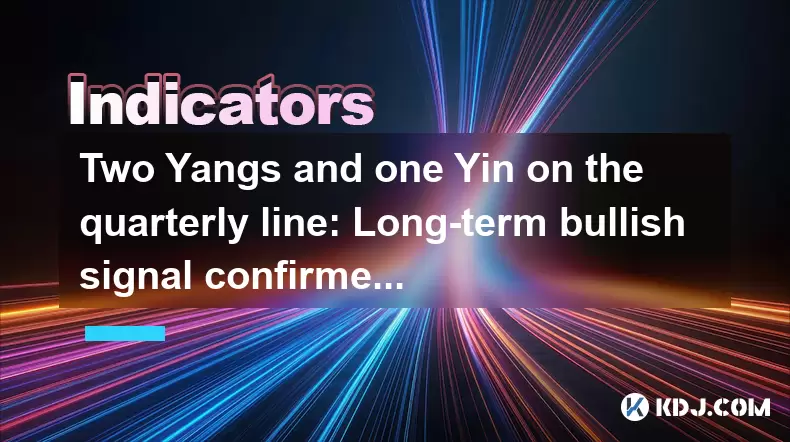
Two Yangs and one Yin on the quarterly line: Long-term bullish signal confirmed?
Jun 12,2025 at 07:00am
Understanding the 'Two Yangs and One Yin' Candlestick PatternIn technical analysis, candlestick patterns play a pivotal role in identifying potential market reversals or continuations. The 'Two Yangs and One Yin' pattern is one such formation that traders often observe on longer timeframes like the quarterly chart. This pattern consists of two bullish (...
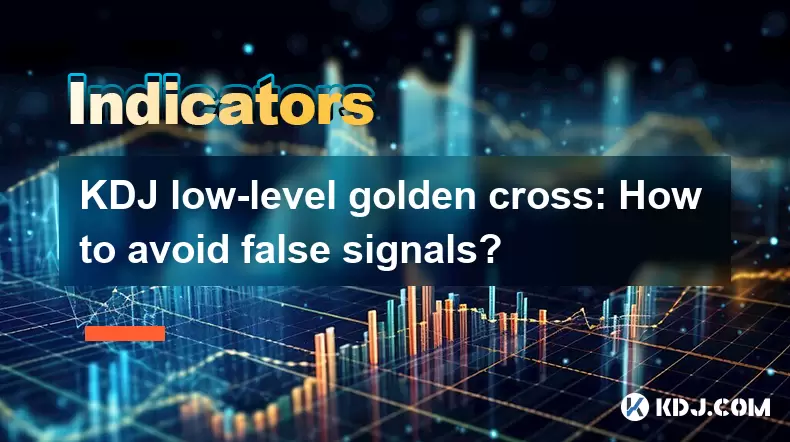
KDJ low-level golden cross: How to avoid false signals?
Jun 12,2025 at 08:21am
Understanding the KDJ IndicatorThe KDJ indicator, also known as the stochastic oscillator, is a momentum-based technical analysis tool widely used in cryptocurrency trading. It consists of three lines: the %K line (fast stochastic), the %D line (slow stochastic), and the %J line (divergence value). These lines oscillate between 0 and 100, helping trader...

Bottom-up volume stagnation: Is it accumulation or heavy selling pressure?
Jun 12,2025 at 01:42pm
What Is Bottom-Up Volume Stagnation?Bottom-up volume stagnation refers to a specific pattern observed in cryptocurrency trading charts where the price of an asset moves sideways or slightly downward, and trading volume remains consistently low over an extended period. This phenomenon is often seen after a sharp price drop or during a prolonged bear mark...
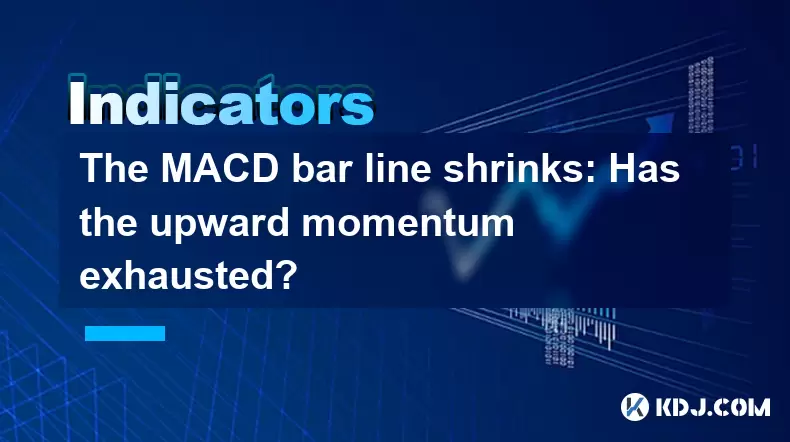
The MACD bar line shrinks: Has the upward momentum exhausted?
Jun 12,2025 at 12:49am
Understanding the MACD Bar LineThe Moving Average Convergence Divergence (MACD) is a widely used technical indicator in cryptocurrency trading. It consists of three main components: the MACD line, the signal line, and the MACD histogram (also known as the bar line). The MACD bar line represents the difference between the MACD line and the signal line. W...

The chip peak moves up: Is the main force quietly shipping?
Jun 12,2025 at 01:01am
Understanding the Chip Peak Movement in Cryptocurrency MiningIn recent years, the chip peak movement has become a critical topic within the cryptocurrency mining community. This phrase typically refers to the point at which mining hardware reaches its maximum efficiency and output capacity. When this peak shifts upward, it often signals changes in the s...
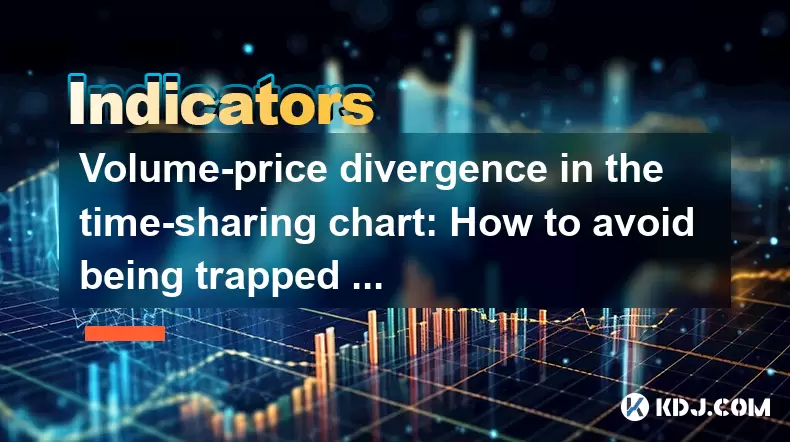
Volume-price divergence in the time-sharing chart: How to avoid being trapped on the same day?
Jun 12,2025 at 07:28pm
Understanding Volume-Price Divergence in Cryptocurrency TradingVolume-price divergence is a critical concept in technical analysis, especially within the fast-moving world of cryptocurrency trading. It refers to a situation where price movement and trading volume move in opposite directions. For instance, if the price of a cryptocurrency is rising while...

Two Yangs and one Yin on the quarterly line: Long-term bullish signal confirmed?
Jun 12,2025 at 07:00am
Understanding the 'Two Yangs and One Yin' Candlestick PatternIn technical analysis, candlestick patterns play a pivotal role in identifying potential market reversals or continuations. The 'Two Yangs and One Yin' pattern is one such formation that traders often observe on longer timeframes like the quarterly chart. This pattern consists of two bullish (...

KDJ low-level golden cross: How to avoid false signals?
Jun 12,2025 at 08:21am
Understanding the KDJ IndicatorThe KDJ indicator, also known as the stochastic oscillator, is a momentum-based technical analysis tool widely used in cryptocurrency trading. It consists of three lines: the %K line (fast stochastic), the %D line (slow stochastic), and the %J line (divergence value). These lines oscillate between 0 and 100, helping trader...

Bottom-up volume stagnation: Is it accumulation or heavy selling pressure?
Jun 12,2025 at 01:42pm
What Is Bottom-Up Volume Stagnation?Bottom-up volume stagnation refers to a specific pattern observed in cryptocurrency trading charts where the price of an asset moves sideways or slightly downward, and trading volume remains consistently low over an extended period. This phenomenon is often seen after a sharp price drop or during a prolonged bear mark...

The MACD bar line shrinks: Has the upward momentum exhausted?
Jun 12,2025 at 12:49am
Understanding the MACD Bar LineThe Moving Average Convergence Divergence (MACD) is a widely used technical indicator in cryptocurrency trading. It consists of three main components: the MACD line, the signal line, and the MACD histogram (also known as the bar line). The MACD bar line represents the difference between the MACD line and the signal line. W...

The chip peak moves up: Is the main force quietly shipping?
Jun 12,2025 at 01:01am
Understanding the Chip Peak Movement in Cryptocurrency MiningIn recent years, the chip peak movement has become a critical topic within the cryptocurrency mining community. This phrase typically refers to the point at which mining hardware reaches its maximum efficiency and output capacity. When this peak shifts upward, it often signals changes in the s...

Volume-price divergence in the time-sharing chart: How to avoid being trapped on the same day?
Jun 12,2025 at 07:28pm
Understanding Volume-Price Divergence in Cryptocurrency TradingVolume-price divergence is a critical concept in technical analysis, especially within the fast-moving world of cryptocurrency trading. It refers to a situation where price movement and trading volume move in opposite directions. For instance, if the price of a cryptocurrency is rising while...
See all articles





















